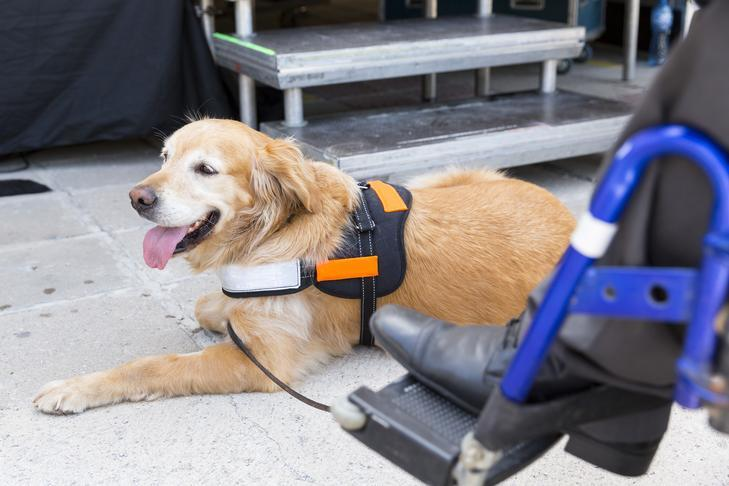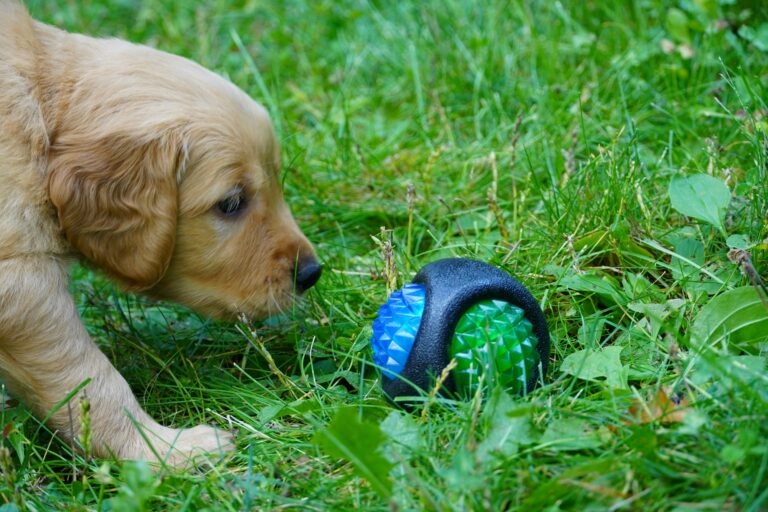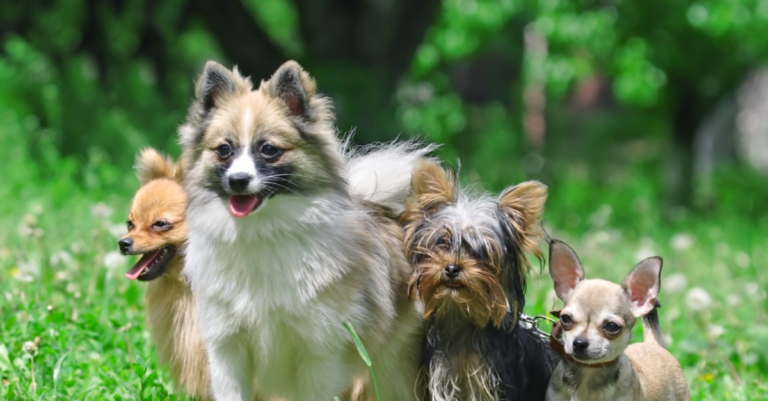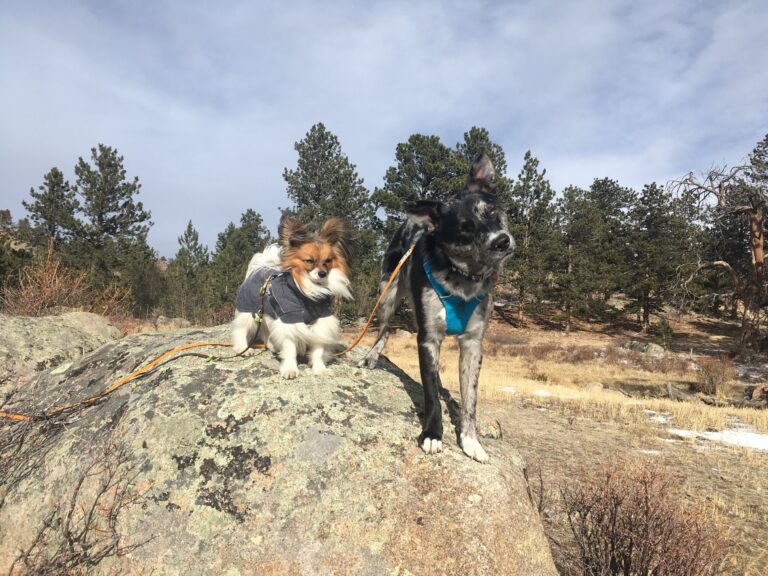Introducing Fearless Fidos, the game-changing training solution that can help transform timid tiny canines into confident, sociable companions. With an expert-led approach, Fearless Fidos is dedicated to assisting pet parents in overcoming the unique challenges faced by shy small pups.

Small dogs may have the biggest hearts, but their diminutive size can sometimes make the world a daunting place for them. This post delves into the intricacies of the Fearless Fidos training program, designed to boost the confidence of these little dogs, enabling them to navigate their environment fearlessly.
The Fearless Fidos training program is a thoughtfully curated guide that employs expert insights and professional techniques. These techniques are designed to instill a sense of self-assuredness in your small pup. By implementing this training, pet parents can expect a remarkable transformation in their shy dogs, with them gradually evolving from reserved pups to spirited, self-assured pets.
In this post, we’ll provide a comprehensive breakdown of the Fearless Fidos training program, highlighting its key components, benefits, and effectiveness. You’ll gain a deeper understanding of how this program can aid in making significant strides towards boosting your small pup’s confidence.
In essence, Fearless Fidos is more than just a training program. It’s a guide to creating a positive environment that encourages your small pup to grow, learn, and most importantly, feel safe. Discover the transformative power of expert training and join us on a journey towards building a confident, well-rounded companion for life.
Understanding Canine Behavior
In order to effectively train shy small pups, it’s imperative to first understand the basics of canine behavior. Dogs, much like humans, have unique personalities and temperaments that can be heavily influenced by a variety of factors such as breed, upbringing, and life experiences.
Shyness in dogs can manifest in several ways. Some pups may be aloof or indifferent, others might be fearful or anxious, and in extreme cases, some dogs may even exhibit signs of aggression. It is important to note that these behaviors are typically responses to fear or discomfort, rather than inherent traits of the dog’s character.
Key Factors in Canine Shyness
- Breed: Certain breeds are naturally more reserved or anxious than others. For example, Chihuahuas and Papillons, despite their small size, are known for their standoffish demeanor.
- Upbringing: A dog’s early experiences play a significant role in shaping its behavior. A pup that was poorly socialized or experienced traumatic events may become shy or fearful.
- Life Experiences: Dogs can also develop shyness as a response to negative experiences. A single traumatic incident can make a dog wary of specific situations, people, or other animals.
Creating Safe Learning Environments
Confidence-building starts with creating environments where your small dog feels safe, respected, and empowered. Shy dogs require stability and predictability to develop trust. Training should always begin in a familiar space where distractions are minimal and stress levels are low. This could be a quiet room in your home or a secluded corner of the backyard where your dog already feels comfortable.
As your dog becomes more at ease in this environment, you can gradually expand the training area to more stimulating spaces. Progress might include practicing commands in different rooms, then moving to the front yard, a quiet park, and eventually a more social setting. Progression should always be paced according to your dog’s comfort, not a schedule. Slow, consistent exposure builds confidence much more effectively than forced situations that lead to fear or panic.
Understanding the Role of Routine in Training
Routine is a powerful tool in helping shy dogs feel grounded and secure. Establishing regular training times and predictable schedules allows your dog to anticipate what comes next, which reduces anxiety. Dogs are creatures of habit, and knowing what to expect can make them more open to new experiences.
Try incorporating short, daily training sessions into your dog’s routine. Keeping sessions consistent in timing and duration helps form a sense of structure, while also reinforcing your dog’s growing skills. Over time, as their confidence increases, you can begin to introduce small changes to the routine to teach adaptability and resilience.
Building Skills Step by Step
Confidence is often the result of successfully accomplishing tasks. For shy dogs, even the smallest victories—like sitting on command or walking up to a new person—can serve as a building block for greater self-assurance. The key is to break down training into small, achievable steps.
Start with simple, low-pressure commands such as “sit,” “stay,” and “touch.” These are foundational skills that are easy to teach and rewarding for your dog to complete. Use a calm tone and relaxed body language to create a supportive training experience. If your dog appears overwhelmed or unresponsive, take a step back and try an easier task before moving forward again.
Each successful repetition of a command not only teaches a useful behavior but also reinforces a sense of capability and mastery within your dog. Over time, this can dramatically reduce timid behavior and increase their willingness to face unfamiliar challenges.
Encouraging Exploration and Independence
Encouraging your shy small dog to explore their environment is a key part of building their confidence. Controlled exploration gives them the opportunity to interact with new scents, sights, sounds, and textures without the pressure of direct interaction with strangers or other animals.
Let your pup investigate at their own pace. Don’t drag them toward new things, but rather let their curiosity guide them. Reward any moment of bravery—such as sniffing a new object or approaching a quiet stranger—with praise, treats, or gentle affection. Avoid punishing hesitation or fear. Instead, provide space and reassurance that they are in control of their own comfort levels.
Introducing varied environments gradually, like a different walking route or a trip to a quiet dog-friendly café, builds tolerance to new stimuli. Confidence grows naturally when a dog feels safe and experiences that the world is not a threatening place.
Using Play as a Confidence Booster
Play is one of the most underestimated tools in training shy dogs. Through play, dogs learn how to interact, express themselves, and build trust. For a small dog that struggles with nervousness, structured playtime can unlock new levels of engagement and confidence.
Games like tug-of-war, fetch, or find-the-treat engage your dog’s body and mind while reinforcing positive interaction with you. Using interactive toys that make noises, move, or require problem-solving can keep your pup mentally stimulated and focused. This not only relieves stress but also builds resilience through mental enrichment.
When a dog realizes they can succeed in a fun, low-pressure activity, they are more likely to carry that feeling of success into other areas of life. Play also deepens your bond and provides a foundation of trust that supports training efforts.
Reinforcing Calm Behavior in Stressful Moments
Shy dogs often become reactive in new or uncomfortable situations. Training should include exercises that teach them how to regulate their emotional responses. Reinforcing calm behavior teaches them that they can remain safe and in control even when confronted with stressors.
For example, you can teach your dog a “settle” cue by rewarding them when they lie down and relax in the presence of a mild distraction. Gradually increase the intensity of the distraction while continuing to reward calmness. Over time, your dog learns that remaining relaxed brings rewards and that they don’t need to react fearfully.
This approach can be applied in many different contexts, such as vet visits, car rides, or interactions with new people. Teaching your dog how to self-soothe in these situations is a crucial part of building emotional confidence.
Reading Body Language and Respecting Limits
A major part of training shy dogs is learning to read and respond to their body language. Understanding signs of stress, such as tucked tails, lip licking, yawning, or averting eyes, can help you know when your dog is reaching their limit. Respecting these signs and adjusting your approach accordingly shows your dog that you are a trustworthy partner.
By honoring your dog’s signals and offering support when needed, you build a relationship based on empathy and communication. This relationship forms the bedrock of successful training. A dog that feels seen and heard is far more likely to engage willingly in new experiences and behaviors.
Using Training Tools Wisely
When working with shy dogs, the right tools can make a big difference. Harnesses that reduce pulling pressure, lightweight leashes, calming collars with pheromones, and snug-fitting anxiety wraps are all tools that can assist in creating a calm and positive training atmosphere.
Clicker training can also be effective for shy dogs. The clicker marks a correct behavior instantly, making it easier for your dog to understand exactly what they did right. Pairing the clicker with high-value rewards creates a direct and consistent communication pathway between you and your pup.
Avoid tools or methods that rely on punishment or aversive experiences, such as choke chains, yelling, or forced exposure. These approaches can erode trust and deepen fear, undoing progress and damaging your relationship.
Involving Family and Friends
Confidence training shouldn’t happen in isolation. Once your dog has built some foundational trust with you, involving family members and trusted friends in their development can help broaden their social confidence.
Ask others to participate in calm, positive interactions. They can offer treats, engage in play, or simply sit nearby and allow your dog to become comfortable at their own pace. Gradually increasing the number and variety of people your dog interacts with under positive circumstances helps desensitize them to unfamiliar humans.
If your dog is particularly fearful of strangers, start with exposure from a distance, allowing them to observe without pressure. As they grow more comfortable, you can reduce the distance and introduce controlled, friendly interactions.
Celebrating Progress and Small Wins
Confidence building is not a linear process, and progress often happens in small, sometimes imperceptible steps. It’s vital to celebrate every win, no matter how minor it may seem. Whether it’s calmly walking past another dog, greeting a guest with a wagging tail, or simply relaxing in a new place, each milestone is a sign of growth.
Keeping a training journal can be helpful in tracking these improvements over time. Not only does this provide valuable data for adjusting your approach, but it also reinforces your own sense of progress and dedication as a pet parent.
The journey toward confidence is ongoing, and the more consistent, compassionate, and patient you are, the more resilient your shy small dog will become in the face of the big world around them.
Expert Training Techniques
While the above methods are fundamental, there are several expert training techniques that can be beneficial for shy small pups.
Desensitization
Desensitization involves slowly introducing the dog to the object or situation that causes fear, starting at a low intensity and gradually increasing the exposure. This method can help the dog become accustomed to the stimulus and reduce their fear response over time.
Counterconditioning
Counterconditioning works by changing the dog’s emotional response to a scary or uncomfortable situation. This is achieved by associating the fearful situation or object with something positive. For example, if your dog is scared of car rides, you could start by giving them their favorite treat every time they get into the car. Over time, they’ll associate the car with something positive, reducing their fear.
Professional Assistance
If your pup’s shyness is severe or impacting their quality of life, it may be beneficial to seek professional assistance. Experienced dog trainers and behaviorists have the knowledge and skills to address your dog’s fears and anxieties effectively. They can provide personalized training plans and ongoing support to help your pup become more confident.

Remember, every dog is unique, and what works for one might not work for another. Patience and consistency are key when working with a shy pup. With time, dedication, and the right approach, your shy small pup can become a confident and happy dog.
Conclusion
In conclusion, the “Fearless Fidos: Boosting Confidence in Shy Small Pups with Expert Training” approach is a game-changer for all dog owners. It not only enriches the lives of these shy pups by boosting their confidence, but also strengthens the bond between owner and pet. The training methods discussed are a testament to the idea that no dog is too shy or fearful to learn and grow.
Moreover, the expert training techniques equip pet parents with the tools they need to gently guide their pups towards becoming braver and more confident. Through patience, understanding, and positive reinforcement, even the most timid pup can be transformed into a fearless Fido. The importance of this comprehensive training approach cannot be overstated as it has a lasting impact on a dog’s quality of life.
To sum up, “Fearless Fidos” isn’t just about making a dog courageous; it’s about enhancing their overall wellbeing and creating a stronger, deeper connection with their owners. As a result, these once shy pups can now face the world with their tails held high, ready to explore and experience life to the fullest. This is indeed a great victory for dog training and dog lovers worldwide! 🐾🏆



